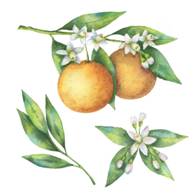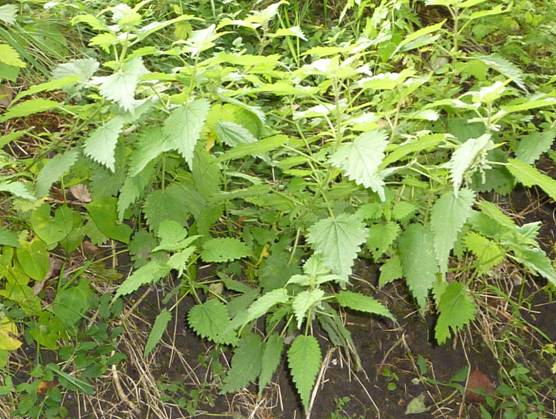
Salty Sam’s Fun Blog for Children
Number 431
Plants for Free
Hello Everyone

By this time of year summer is really here – even on dull, rainy days we hope all danger of harsh frosts are gone and we can start setting our garden up for the new growing season.
My Auntie Alice was showing the children this week how to take soft wood cuttings. lt is a really brilliant way to get plants for free.
You can get plants from other people’s gardens but of course you must ask their permission.
You can take cuttings any time from May through to August but if you take them early in the season and they don’t root properly, you will have a chance to try again.
You take soft wood cuttings from shrubs. You need to take a part that has ‘stalks’ rather than ‘sticks’.
You can take cuttings from plants like hydrangea and weigela.
lf you take cuttings from flowers like pinks (dianthus) the name for the cuttings is pipings.
lf you are not sure whether you can grow a plant from cuttings, just try it.
This is especially useful if you are moving house and you want to take some favourite plants with you but they are really too big to move.
Take cuttings well in advance of your move so that you know they have been successful while you still have an opportunity to start again.
First, prepare small flowerpots by filling them with gritty or sandy compost or even perlite because when you take cuttings you want to get them into a growing medium straight away. You don’t want them to dry out.
Take a tip without a flower bud; only leaves.
Cut the stalk with a very sharp knife, so that you don’t bruise the stalk. Keep your fingers away from the blade. You could also use secateurs if they are very sharp.
Make the cut just below the second pair of leaves down. This is a good place because it is a place where new growth will come from.
lf you are carrying the cuttings a distance to where you will pot them up, put them into a polythene bag to keep them from drying out.
Pull the two bottom leaves off.
You can dip the bottom of the stalk into hormone rooting powder if you want to, but it isn’t always necessary. Tap the excess powder off and back into the pot of powder so that it is not wasted.
You can try using cinnamon instead of hormone rooting powder.
Slip the bottom of the cutting into the compost by the sides of the pot. Cuttings seem to like being by a kind of wall.
ln this way, you can put four or five cuttings around a pot.
Put the pot in a warm place and make sure the compost doesn’t completely dry out. Some people put a plastic bag over the top of the pot so that it creates a mini greenhouse over the new plants.
Keep your cuttings out of full sun.
You can keep them in a well-ventilated greenhouse, cold frame or conservatory.
You don’t have to dig the cuttings up to see if they have rooted.
You will see new leaves sprouting at the top of the plants after they have created some roots first.
When they are growing away well, put each of them into their own pot so that they have more room to grow.
This is not the only way to get parts of plants to root.
lf you look in the picture gallery this week, you will see other methods like leaf bud cutting, layering of low growing branches (for plants like rhododendrons and magnolias) which is how some plants like blackberries spread naturally and air laying which is a way you can shorten a rubber plant that has got too tall. You can also use this method on some types of ficus or dracaenas.
You slice into the stem lengthways with a knife up from the bottom and make a cut about 5cm long. You can do this on a branch or if it is a plant like a rubber plant that only has one stem, on the main stem.
Push hormone rooting powder into the wound, then put some wet sphagnum moss into the cut and wrap a strip of clear plastic around the area to keep in the moisture. The plastic can be tied to the stalk at each end of the treated area with bin ties – don’t tie them too tightly.
After 4-6 weeks you will see little white roots appearing under the plastic.
You can even buy air-laying pods now.
Release the smaller plant by cutting it away and put this smaller plant into a pot, it will be more compact and less leggy than the on it was taken from.
The old plant may grow new leaves lower down to bush out, but it may not.
lsn’t nature amazing?
lf you like my blog, please support it by telling all your friends and followers about it.
Thank you!
And see you again next Fun Friday!
Love and kisses
Salty Sam

www.christina-sinclair.com


Bill and Bob’s Joke of the Week![]()
![]()
Bob: Why didn’t the gardener have any plants?
Bill: Because he hadn’t botany!

Salty Sam © Christina Sinclair 2015
Unauthorized use and/or duplication of material from this blog without express and written permission from this blog’s author and owner is strictly prohibited.
Links may be used to www.christina-sinclair.com

Picture Gallery
 Hydrangea
Hydrangea
 Where to take your cuttings from
Where to take your cuttings from
 Cuttings rooting
Cuttings rooting
 Leaf bud cutting
Leaf bud cutting
 Propagation by layering
Propagation by layering
 Different types of layering
Different types of layering
 Ways of getting plants for free
Ways of getting plants for free
 Weigela
Weigela
 Willow cuttings can just be pushed into the soil in the garden
Willow cuttings can just be pushed into the soil in the garden
 Primroses will spread themselves across grassy banks
Primroses will spread themselves across grassy banks
 If you grow a tree from a pip like an orange make you sure you know its needs
If you grow a tree from a pip like an orange make you sure you know its needs
Orange trees will not want to be brought into the house over winter
it will be too dry for it there
An orange tree will need a cool, frost-free, humid environment
 If you have a lemon tree, cut the fruits off don’t pull them
If you have a lemon tree, cut the fruits off don’t pull them
Don’t leave too many fruits on the tree for too long
because the tree will start to feel the strain


 THE SALTY SAM NEWS DESK
THE SALTY SAM NEWS DESK

The roses in Auntie Alice’s garden are beginning to bloom beautifully as they do every year.
They are her favourite flowers.
You would expect to find lots of roses in the garden of a place called Rose Cottage, wouldn’t you?
She also loves to make rose petal tea.
It couldn’t be easier. She just puts a very large handful of petals into a tea pot and pours boiling water onto them. Then she lets the petals infuse.
That means the flavour of the tea takes time to develop as the petals are steeped in water.
The damask rose and French rose are particularly good roses to use.
Of course, you want to make sure the petals are clean before you use them and haven’t been sprayed with anything harmful!
Rose petal tea, or perhaps more correctly called a tisane, is very good at calming the nerves.
Sometimes, Auntie Alice makes tea out of peppermint leaves too. This tea is good for calming your stomach.
Chrysanthemum morifolium petals and nettle leaves are supposed to be able to help with hay fever.
Nettle leaves have a lot of nutrition but you need gloves to handle them.

Stinging nettles
The World Health Organization has found out that the use of herbal remedies as medicine is more widespread throughout the world than manufactured drugs.

Let an adult check that you are picking what you think you are picking before you eat anything from the garden!

*********************
TO ADVERTISE ON THIS BLOG
PLEASE CONTACT:
christina.sinclair.ads@aol.co.uk
*********************

 Quick Quiz
Quick Quiz
Draw a column of boxes 6 across and 10 down
Put the 6 letter answers to these clues across inside the boxes
The first letters of the answers will spell a word
- the colourful things you grow in your garden
- an algae and a fungus together
- gardening without chemicals
- a box where worms are fed with kitchen scraps
- insects often found in dahlia flowers
- a symbol of love
- known as the ball gowns of the flower world
- the eighth month when the leaves turn to autumnal colours
- the ground that gardens are made in
- a garden ornament that tells the time when the weather is nice




lt’s the Weekend!

HOW TO MAKE A BAG TO CLlP ONTO A KEY STRAP
This bag can be tied onto the bottom of a neck strap (lanyard).
If you put your keys on the neck strap and this bag, you may not need to carry any other bag with you.
This will leave your hands free to do other things.
The bag has two pockets.
One can be used for a bank card and the other for a coin for a trolley and a key.
Don’t put bank cards next to a travel card because they can ‘talk’ to each other – and have an argument!
CARD POUCH OUTER PANELS (KNIT TWO)
Using 4mm knitting needles and grey dk yarn cast on 17 stitches
Knit 2 rows of garter stitch
Knit 30 rows of stocking stitch
Knit 4 rows garter stitch
Cast off
CARD POUCH INNER PANEL (KNIT ONE)
Using 4mm knitting needles and grey dk yarn cast on 17 stitches
Knit 14 rows of stocking stitch
Knit 2 rows garter stitch
Cast off
TO MAKE UP
- Insert the inner panel snugly into the back of one of the outer panels and stitch around the sides and base – leave the top free
- Sew across the base of the two outer panels with wrong sides together
- Then sew up the sides with wrong sides together – this will mean that the bag has a flat appearance
- Crochet 45 chains into a length of yarn of a colour that matches or contrasts and thread this cord into the top channel
- Tie a knot into the two ends – this will allow you to open and close the bag
- Make another chain to tie onto the metal ring at the bottom of the key strap – about 30 chains should be enough
The bag should sit under your coat – but make sure it is securely tied to the strap to make sure that you don’t lose it.
If you do not have a neck strap to use, you could make one by knitting one in garter stitch – cast on 7 stitches and knit every row in garter stitch until your strap is as long as you want it – don’t forget to slip the first stitch on very row so that you have neat edges.

Please note that the material on this blog is for personal use and for use in classrooms only.
It is a copyright infringement and, therefore, illegal under international law to sell items made with these patterns.
Use of the toys and projects is at your own risk.
©Christina Sinclair Designs 2015


Quick Quiz Answers
- the colourful things you grow in your garden – flowers
- an algae and a fungus together – lichens
- gardening without chemicals – organic
- a box where worms are fed with kitchen scraps – wormery
- insects often found in dahlia flowers – earwigs
- a symbol of love – red rose
- known as the ball gowns of the flower world – peonies
- the eighth month when the leaves turn to autumnal colours – October
- the ground that gardens are made in – top soil
- a garden ornament that tells the time when the weather is nice – sundial
Answers = flowerpots



